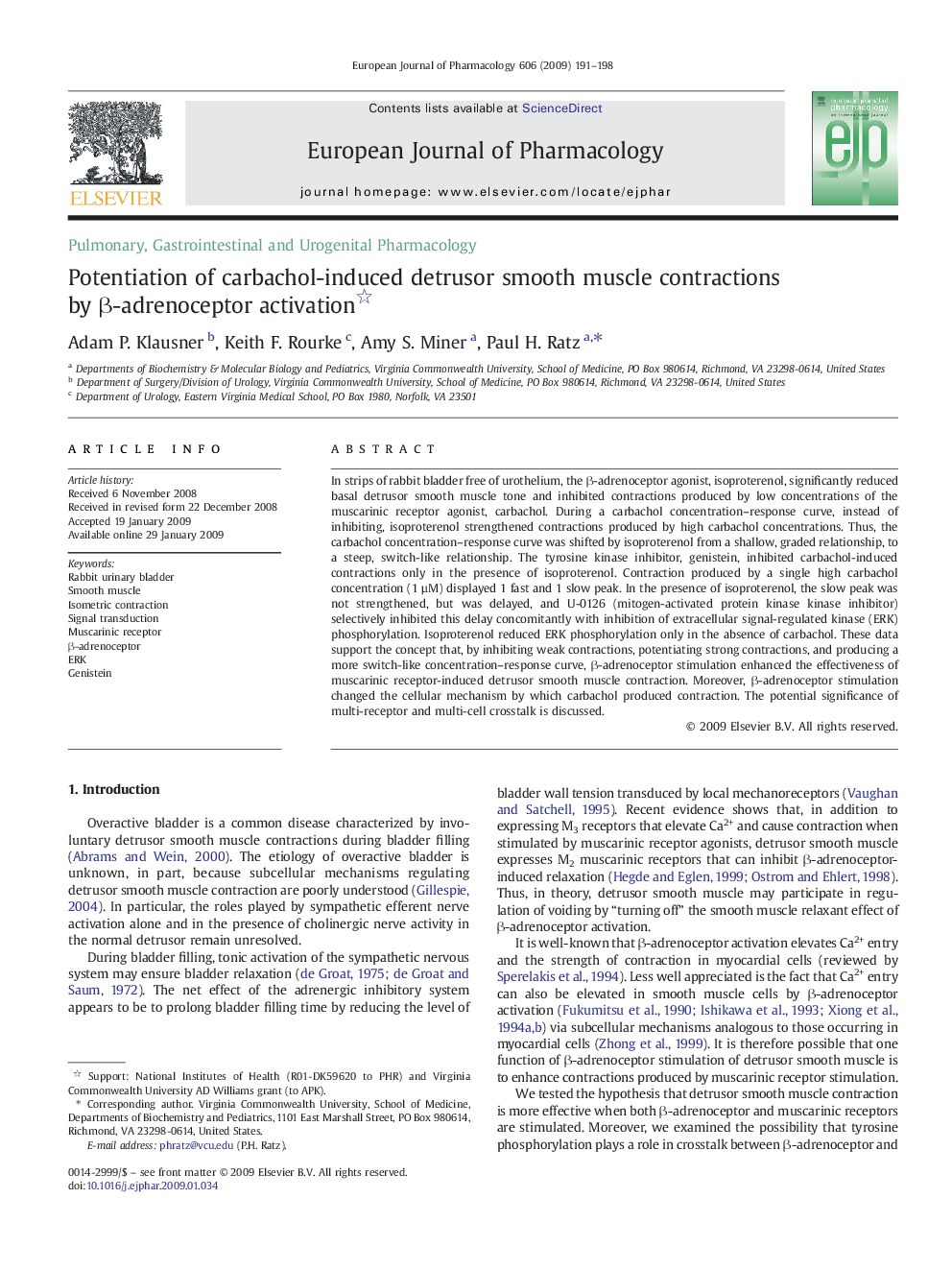| Article ID | Journal | Published Year | Pages | File Type |
|---|---|---|---|---|
| 2534409 | European Journal of Pharmacology | 2009 | 8 Pages |
In strips of rabbit bladder free of urothelium, the β-adrenoceptor agonist, isoproterenol, significantly reduced basal detrusor smooth muscle tone and inhibited contractions produced by low concentrations of the muscarinic receptor agonist, carbachol. During a carbachol concentration–response curve, instead of inhibiting, isoproterenol strengthened contractions produced by high carbachol concentrations. Thus, the carbachol concentration–response curve was shifted by isoproterenol from a shallow, graded relationship, to a steep, switch-like relationship. The tyrosine kinase inhibitor, genistein, inhibited carbachol-induced contractions only in the presence of isoproterenol. Contraction produced by a single high carbachol concentration (1 µM) displayed 1 fast and 1 slow peak. In the presence of isoproterenol, the slow peak was not strengthened, but was delayed, and U-0126 (mitogen-activated protein kinase kinase inhibitor) selectively inhibited this delay concomitantly with inhibition of extracellular signal-regulated kinase (ERK) phosphorylation. Isoproterenol reduced ERK phosphorylation only in the absence of carbachol. These data support the concept that, by inhibiting weak contractions, potentiating strong contractions, and producing a more switch-like concentration–response curve, β-adrenoceptor stimulation enhanced the effectiveness of muscarinic receptor-induced detrusor smooth muscle contraction. Moreover, β-adrenoceptor stimulation changed the cellular mechanism by which carbachol produced contraction. The potential significance of multi-receptor and multi-cell crosstalk is discussed.
